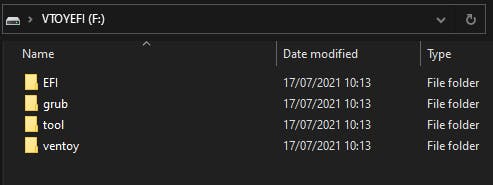IT infrastructure/support engineer commissioning bare metal servers/desktops/workstations? Read on ...
the best tool for ad hoc bare metal deployments
I would like to thank everyone who has visited my blog on hashnode.
I am now moving all content to my portal - portal.habitats.tech - where I have complete control of the content presentation.
Having tested almost all blogging and newslettering sites I have come to the conclusion they are all very limited in what can be accomplished.
I will be sunsetting this blog by summertime. Please follow me on my portal where I have started publishing new content.
If you are an IT engineer in need of commissioning bare metal systems, your usually go to tools such as Balena Etcher or Rufus or some other kind of tool which allows you to create bootable USB drives (excluded are managed deployments on scale).
These tools are OK if you have a handful of systems and plenty of time to burn images. But what if you have a home lab or are a visiting engineer who has to support multiple versions of Windows and Linux systems?
I believe regardless of the size of your setup the best tool for installing bare metal systems is Ventoy (ventoy.net). Excluded are applications allowing mass deployment of bare metal systems in a controlled/managed deployment scenario (e.g. Acronis, AOMEI, ManageEngine, SmartDeploy, Quest, Symantec, Ivanti, Paragon, to name some of the better known).
Why Ventoy (ventoy.net) you might ask. For the simple reason it allows you to create a single bootable USB drive or memory stick from which you can install any ISO image of an OS or an application appliance. An application appliance is an application ecosystem wrapped in a bootable OS (see my blog on grommunio - blog.habitats.tech/grommunio-an-open-source.. - for an application appliance example)
For example, I always carry a 4TB USB stick with all the ISO images of the OSs and Appliances I need to support. When I boot my USB stick, Ventoy boots (it is based on a small Linux image) and then presents the USB stick data partition with all my ISO images. When Ventoy creates a bootable USB drive it creates two partitions; a small partition to boot a minimal Linux OS and the data partition where all the ISO images are held.
The boot partition is only 32Mb in size as follows:

The second partition occupies the rest of the USB drive and is where all the ISO images reside. An example follows (you can open this partition in WIndows or Linux to copy any ISO you wish).

The data partition can contain any file or folder you want (e.g. PDFs, support utilities, tarballs, zip files, etc). Ventoy will just disregard the non ISO files.
Ventoy is actively maintained and now and then new versions pop up. Please support the creator if you use this amazing tool (it is a massive time saver).
New OS version got released? Simply download the ISO image on the Ventoy data partition, boot the bare bones system with the Ventoy USB, select the OS ISO image you want and there you go. Bye, bye burning bootable images or carrying multiple bootable USB sticks. Just one USB memory stick to rule them all.
Below is an example of what you will see when Ventoy boots up; all your ISO images; select one and that is it, you have started a bare metal install.

The above image is from the Ventoy website.

